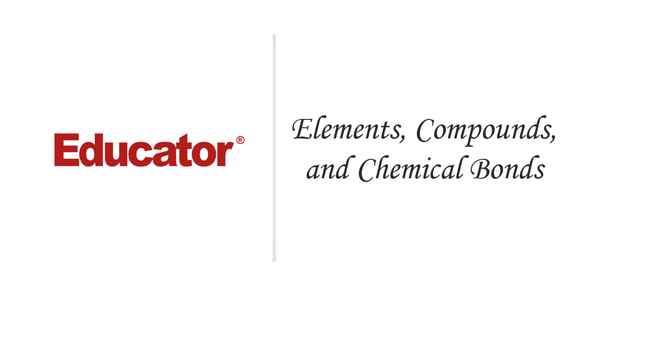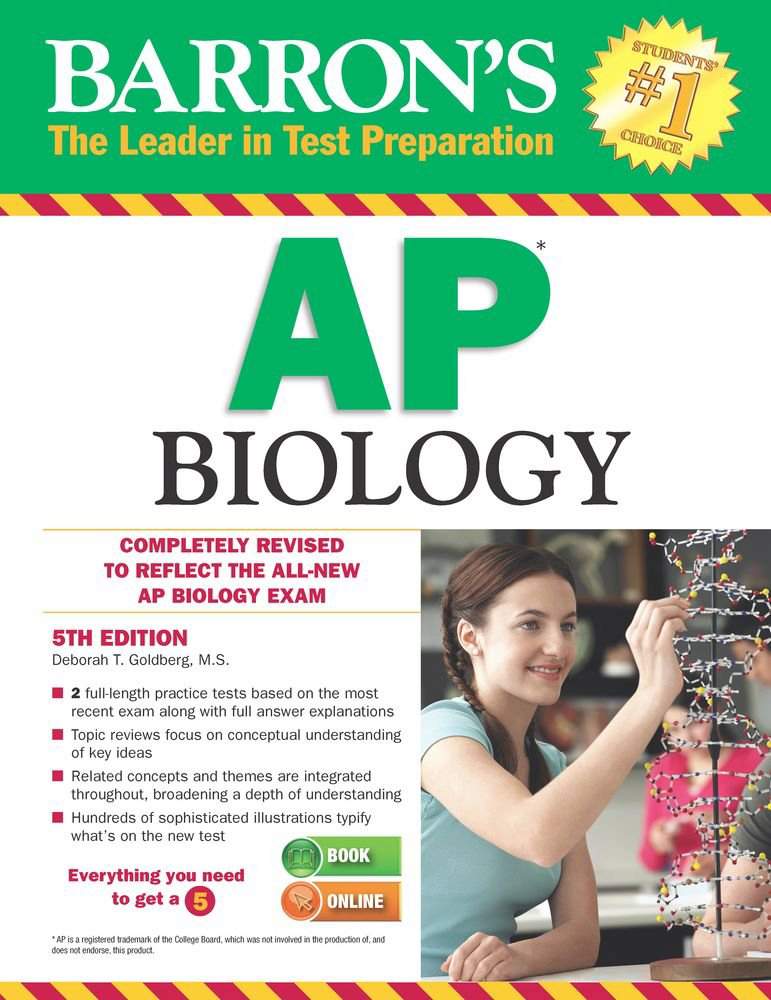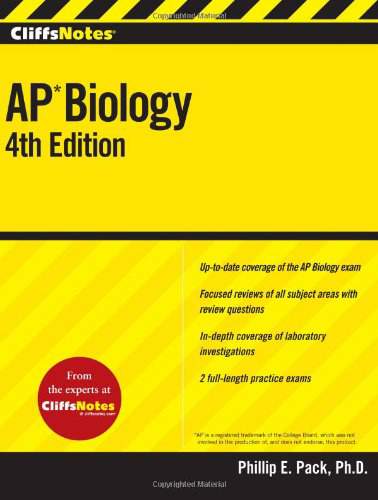
For more information, please see full course syllabus of AP Biology
AP Biology Elements, Compounds, and Chemical Bonds
Biological processes are rooted in chemistry, so it’s important to develop a basic understanding of the elements (the simplest forms of matter) and how they bond to form compounds. Living organisms are primarily made of the elements oxygen, carbon, hydrogen, and nitrogen, as well as other elements in “trace amounts.” Molecules form when atoms bond together in a particular structure, while compounds are made from elements in a fixed ratio. Elements are made of atoms, and atoms are made of protons, neutrons (which determine the isotopes), and electrons (which play a big role in chemistry through their valence shells). Bonds are generally either covalent or ionic. Avogadro’s number is used to calculate molecular mass and molar concentration, as well as the amount of reactants and products in a chemical reaction.
Share this knowledge with your friends!
Copy & Paste this embed code into your website’s HTML
Please ensure that your website editor is in text mode when you paste the code.(In Wordpress, the mode button is on the top right corner.)
- - Allow users to view the embedded video in full-size.










































 Answer Engine
Answer Engine






0 answers
Post by Michael Yang on December 30, 2020
hydrogen bonds arent convalent bonds tho, arent they a special type of dipole dipole?
0 answers
Post by Swati Sharma on May 9, 2018
Dear Dr Eaton, I just graduated from College and I am started to prepare fro the MCAT. Could I use these videos fro MCAT as well?
0 answers
Post by Hyunjun Kim on February 20, 2017
Dr. Eaton I am so blessed to study with your lectures !!!
For real, you are the best science/biology teacher overall my high school experience!!!
Thank you so much.
0 answers
Post by Firebird wang on November 2, 2016
Professor, I know that AP Statistics is not your subject, but I just wonder if you are able to watch the two videos which called "Practice Test 2013 AP Statistics" and "Practice Test 2014 AP Statistics" in the AP Statistics content? Both videos showing network error, I dont know why. I already tried in different computers already.
1 answer
Thu Sep 29, 2016 6:06 PM
Post by Stephen Hunsberger on September 27, 2016
Hello,
I am a teacher trying to use your series as a supplement to my honors biology class. Are there any worksheets or practice problems associated with your presentations? All I'm seeing are lectures. Please help!
0 answers
Post by Apolonia Gardner on November 24, 2015
Hello,
I am a high school senior about to send off my applications for college. I am stuck on one thing – my intended major. Biology and chemistry have been my favorite courses throughout high school, and I would like to get a college degree that will enable me to perform research with viruses. My lifetime goal is to find a cure for a disease. From your experience, what undergraduate major should I shoot for? Biochemistry? Microbiology? Molecular Biology? Immunology? Chemical Biology? Organic Chemistry? Pharmaceutical Science? Any guidance is appreciated.
0 answers
Post by Mohamed Al Mohannadi on October 22, 2015
Carbon.. The atom of life.. Has 6 protons, 6 electrons and 6 neutrons? WOW this should evolve a religious debate (666)
1 answer
Last reply by: Jue
Mon Jun 10, 2019 1:27 PM
Post by James Weaver on July 23, 2015
Would this course be good for general biology?
1 answer
Last reply by: Tom Glow
Sat Dec 27, 2014 3:03 PM
Post by David Gonzalez on July 16, 2014
Where and how are isotopes discovered? And why don't isotopes have their own place on the periodic table? Thanks.
1 answer
Wed Jan 8, 2014 7:26 PM
Post by robina saeed on January 2, 2014
Hi Dr. Eaton,
Is this a complete course or just a review? thanks
0 answers
Post by jaime samano on August 16, 2013
I have trouble on a homework question. It asks what element is the electron configuration of 2,8,8,18,17. How do I sole this?
0 answers
Post by soe bryan on February 17, 2013
what is an example of Van Der Waals forces?
3 answers
Last reply by: Kenosha Fox
Mon Dec 15, 2014 3:11 PM
Post by Ikze Cho on January 14, 2013
is drinking pure H2O dangerous?
1 answer
Thu Dec 6, 2012 6:02 PM
Post by Jonathan Aguero on December 4, 2012
how is ionic bonding used in DNA
1 answer
Mon Nov 12, 2012 6:26 PM
Post by Lisa Lim on October 28, 2012
I don't understand the part where Dr. Eaton says, "the electron pretty much stays within these shells and they (electrons) only pass through them (?) on the way to a different shell." Who is "them"? I'm confused.
3 answers
Last reply by: stephen legge
Tue Mar 12, 2013 12:16 PM
Post by Aniket Dhawan on October 16, 2012
Professor is it possible that I could get a worksheet to do based on this lecture.
Otherwise you were very good.
Thanks
0 answers
Post by Andrea Gulyas on July 23, 2012
Thank you very much!
EI can hardly wait for the rest of the lectures!
:)
2 answers
Last reply by: Chrystal Wang
Mon Aug 26, 2019 7:11 PM
Post by Swetha Atluri on June 3, 2012
In the Ionic Bonds section (32:35), how is the problem of the valence shells solved? It's solved in the Sodium, but it isn't solved in the Chlorine yet. After the electron from Sodium is transferred to Chlorine, there are only 8 electrons in the 3rd shell for Chlorine. Aren't there supposed to be 18 electrons in the third shell for it to have a full valence shell?
1 answer
Last reply by: Dalar Karimian
Wed Aug 7, 2013 7:13 PM
Post by nhuy nguyen on March 25, 2012
are we able to download the lecture? because I don't see where to download.
1 answer
Thu Feb 23, 2012 11:36 AM
Post by Louise Finlayson on February 14, 2012
What a great lecture series - Thank you so much made things so much more understandable :)
1 answer
Sat Feb 4, 2012 4:30 PM
Post by Jialan Wang on January 27, 2012
what is atr-x syndrome?
thanks!
0 answers
Post by Raj Patel on November 21, 2011
buy, lots of stuff being covered in the first unit. still pretty understandable.
0 answers
Post by Daniel Delaney on August 17, 2011
This takes a loooong time to download & google chrome doesn't help. Too bad because I like Dr. Eaton.
1 answer
Mon Feb 7, 2011 5:45 PM
Post by Jay Patel on February 1, 2011
Slight slip of the tongue at 3:50. She meant to say, this is two atoms of *hydrogen* bonded to one atom of water